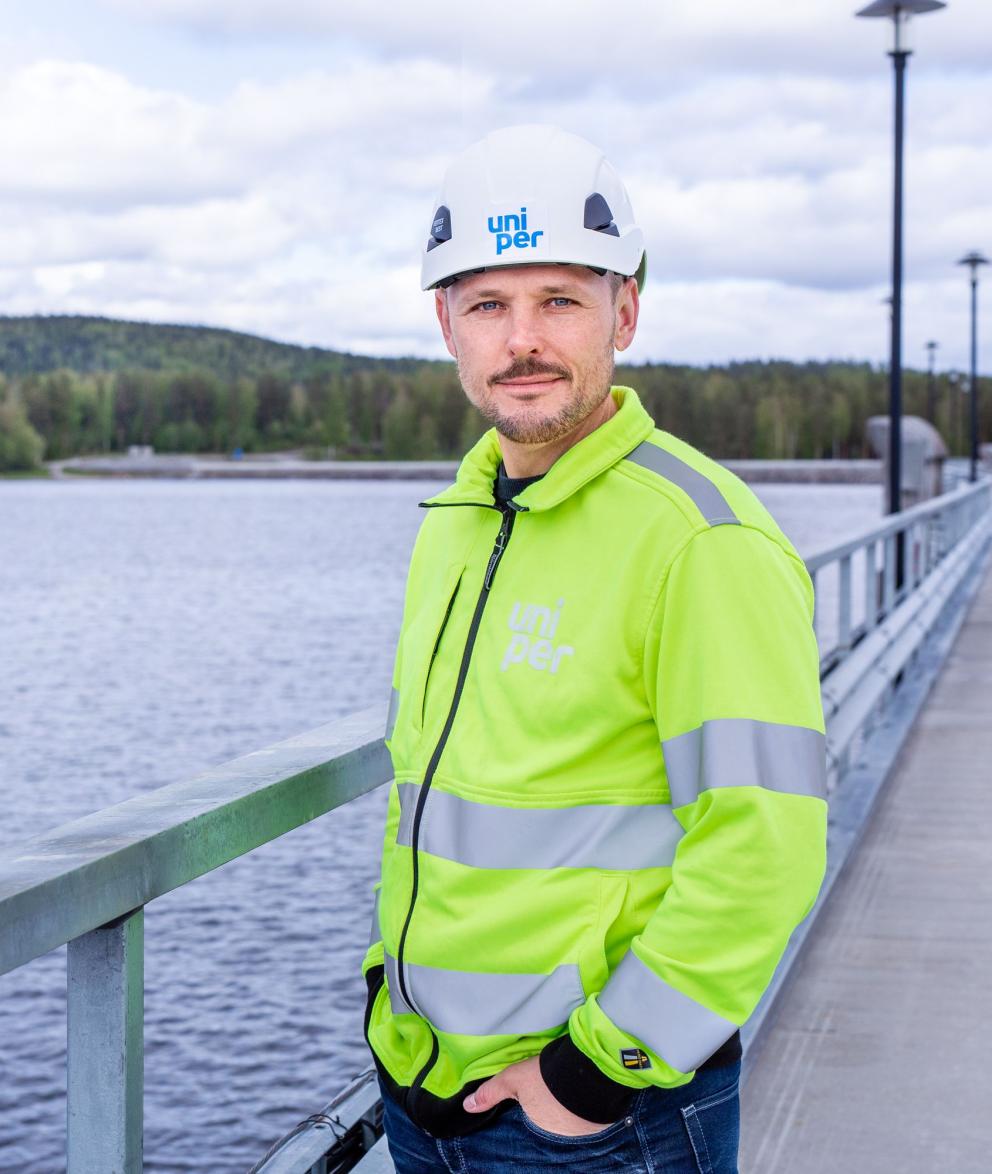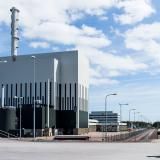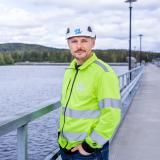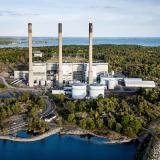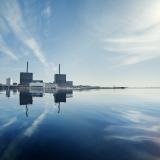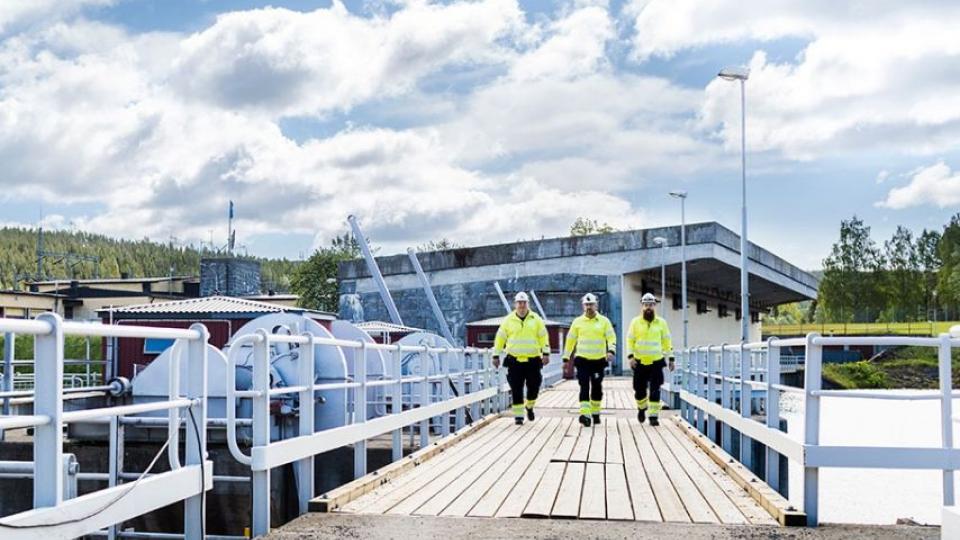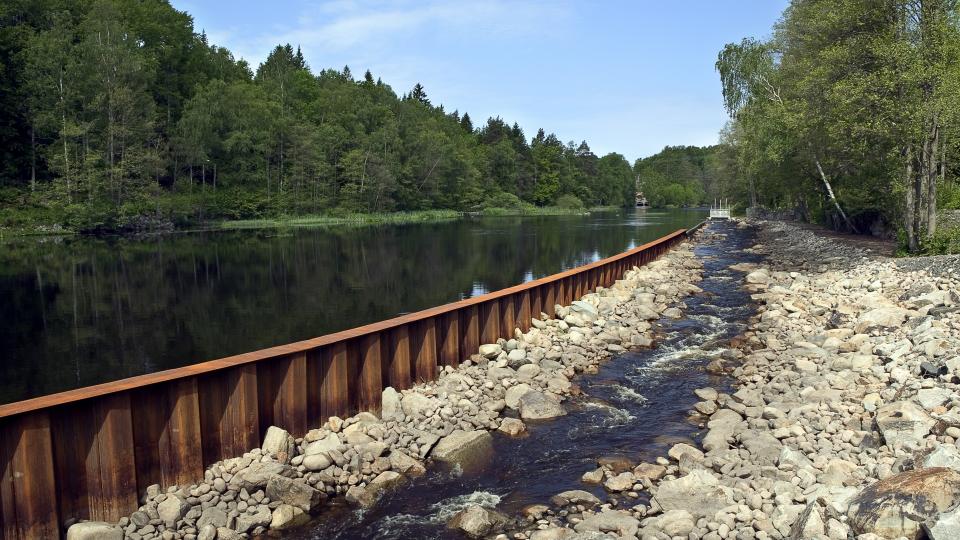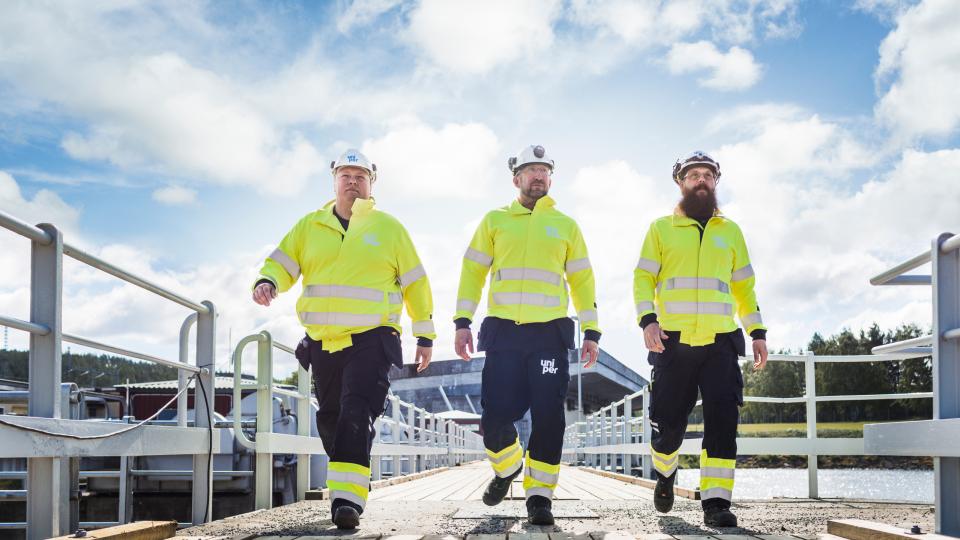Our largest hydro powerplants in Sweden
The following are two of the 74 hydro powerplants owned by Uniper in Sweden.
Hjälta powerplant in Faxälven
- Commissioned: 1952
- Number of generating units: 3
- Installed capacity: 178 MW
- Annual power generation: 1,005 GWh
- Head: 82 meters
In a normal year, the Hjälta power plant generates 1,005 GWh of renewable electricity, which is more than any of Uniper’s other hydro powerplants.
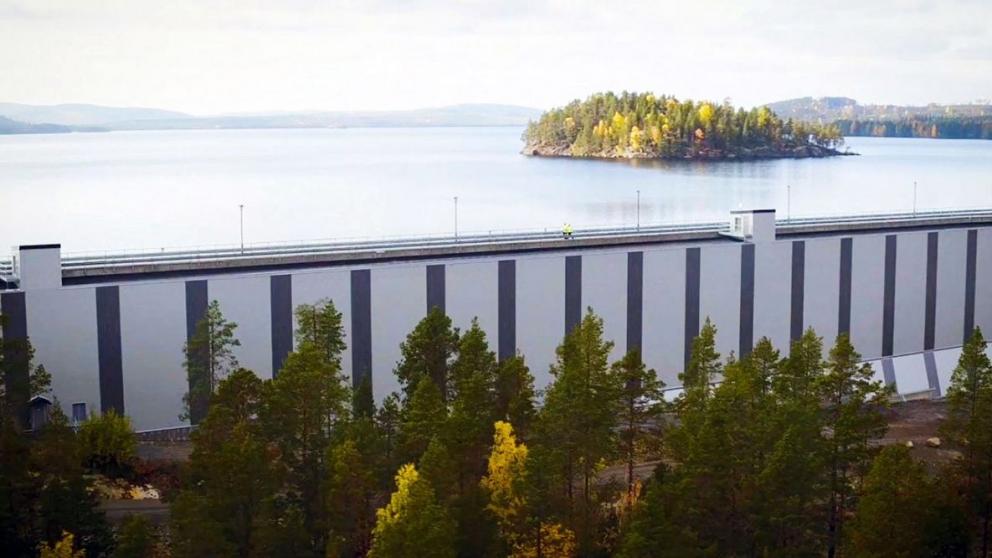
Storfinnforsen powerplant in Faxälven
Concrete dam in Storfinnforsen
- Commissioned: 1953
- Number of generating units: 3
- Installed capacity: 112 MW
- Annual power generation: 543 GWh
- Head: 49.5 meters
The 800-meter concrete dam at Storfinnforsen is the largest concrete dam in Sweden.
The oldest power plant still in operation is Hemsjö Övre in Mörrumsån, commissioned in 1907.
Modernising Uniper's power plants in the Ume River
At times, Uniper’s three power plants along the Ume River have created bottlenecks due to their lower capacity for water flow compared to other plants in the region. To address this and enhance efficiency, Uniper is undertaking a comprehensive project to modernise these facilities.
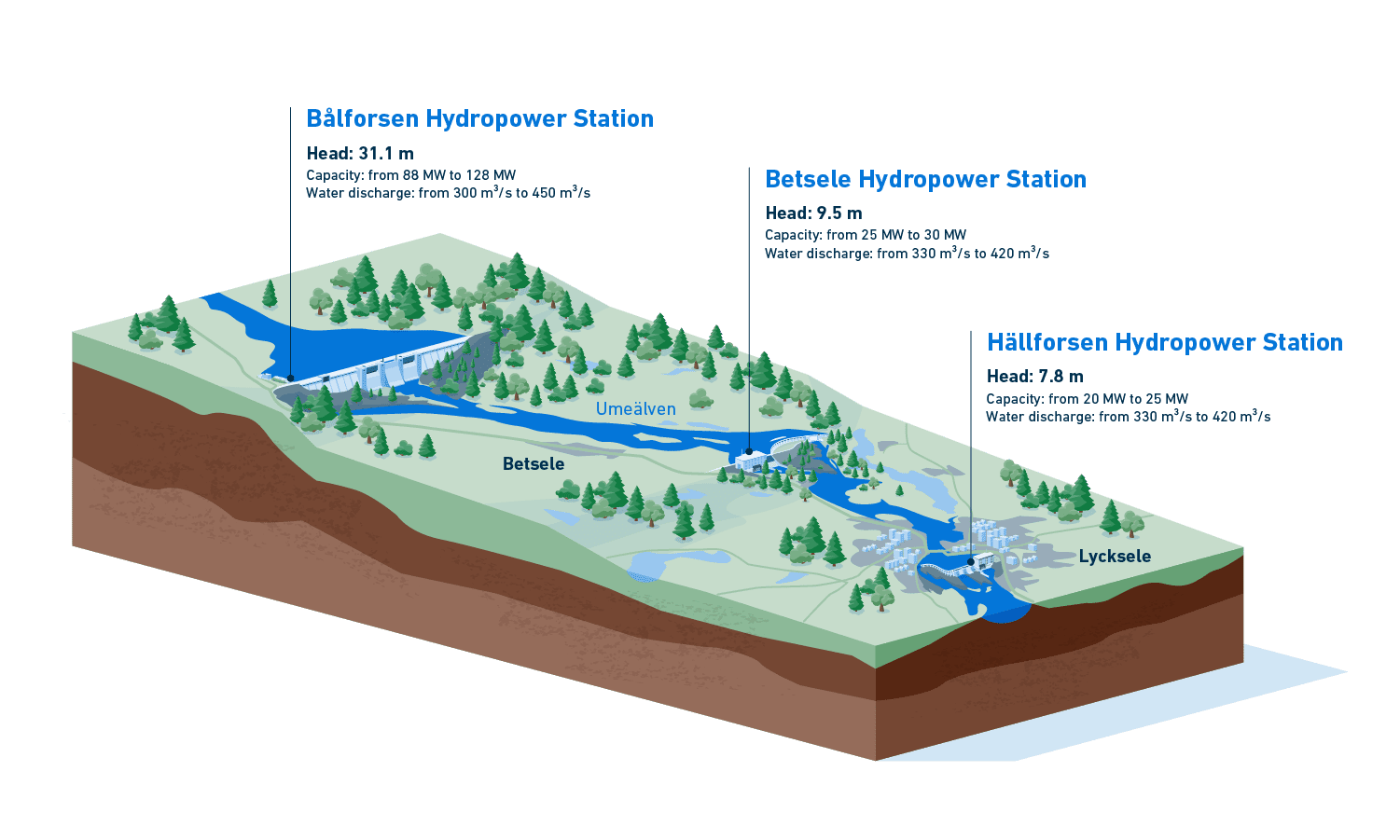
This investment, estimated at approximately 1 billion SEK, includes the construction of a new turbine unit at the Bålforsen plant and the refurbishment of all six existing units. Upon completion, the total annual energy production from Uniper’s power plants in the Ume River will increase from 820 GWh to 920 GWh. This will enable a more stable and efficient power supply to the grid.
Uniper's hydropower plants in the Ume River
Bålforsen power plant
- Commissioned: 1958
- Number of turbine units: two (three after modernisation)
- Installed capacity: 82 MW (128 MW after modernisation)
Bålforsen is one of the key plants along the Ume River. When it was first built in the 1950’s, the site was prepared for a third turbine unit - now being realised as part of Uniper’s modernisation initiative. Once the project is complete, Bålforsen will have an increased capacity and become even more efficient.
Hällforsen power plant
- Commissioned: 1964
- Number of turbine units: two
- Installed capacity: 20 MW (25 MW after modernisation)
Hällforsen plays a pivotal role in regulating the river’s energy flow. Upgrading the turbine units will improve water flow capacity, ensuring optimal utilisation of available resources. These enhancements will reduce water spillage and optimise flow regulation throughout the river system.
Betsele power plant
- Commissioned: 1965
- Number of turbine units: two
- Installed capacity: 25 MW (30 MW after modernisation)
While smaller in scale compared to other plants along the Ume River, Betsele remains a vital contributor to the river’s overall energy production. The ongoing modernisation efforts will enhance Betsele’s efficiency and reliability, while also improving its capacity to deliver essential ancillary services.
Find out more
Hydropower has many advantages. It has near-zero emissions of greenhouse gases, while providing a reliable electricity supply at a competitive price. Hydropower is renewable, because the water that is utilized by the power plant is not consumed, but constantly returned in the form of precipitation.
All electricity and energy production impacts the environment. When it comes to hydropower, powerplants and dams involve an encroachment on the environment that changes the conditions of life in and adjacent to watercourses.
In the Swedish electricity system, hydropower is currently Sweden’s largest source of renewable energy. Together with nuclear power, hydropower is the foundation of the Swedish electricity system.
